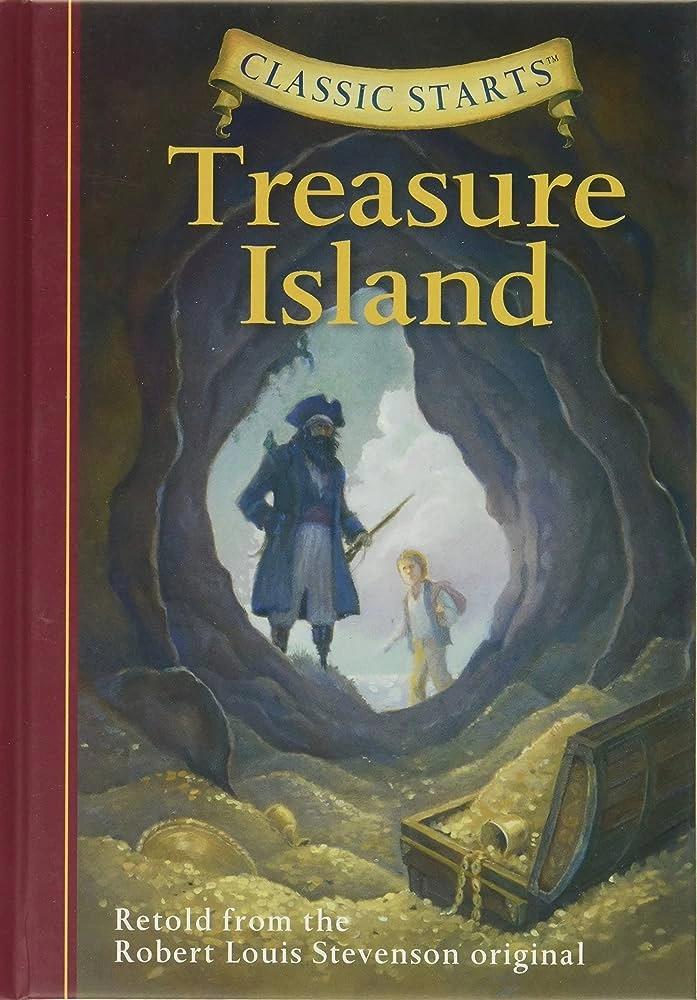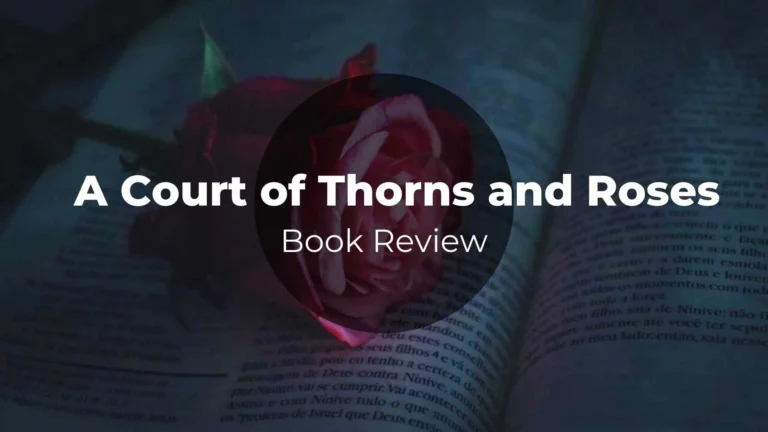Treasure Island Book Review – Sailing the Seas of Literature


Ahoy, fellow literary adventurers! Over the centuries, there’s a certain fascination that never seems to wane—tales of swashbuckling pirates, hidden treasures, and the salty sea air. It’s as if the allure of the open ocean and the thrill of high-stakes plundering have been etched into our collective imagination. And what better vessel to embark on this literary journey than “Treasure Island,” a timeless masterpiece that has not only weathered the tides of time but stands tall as a defining beacon of the pirate adventure genre. Written by the visionary Robert Louis Stevenson, this captivating classic promises more than just a treasure hunt; it offers an invitation to the very heart of adventure itself. So, me hearties, hoist the sails and join me as we set course to unravel the secrets of “Treasure Island” and the brilliance of its mastermind, Robert Louis Stevenson.
Treasure Island Summary
Set your course for adventure as we navigate the treacherous waters of “Treasure Island.” At the heart of this timeless tale lies a secret—a secret so coveted that it has ensnared the minds of pirates, buccaneers, and readers alike for generations. Our guide on this perilous journey is young Jim Hawkins, a lad whose life takes an unforeseen turn when he stumbles upon a cryptic map leading to the legendary Treasure Island. Joined by a cast of characters as diverse as the seven seas, including the charismatic and enigmatic Long John Silver, the book whisks us away on a voyage marked by betrayal, courage, and the lure of boundless riches.
Central to this exhilarating escapade is the captivating theme of a daring treasure hunt. It’s a theme that taps into the innate sense of exploration and the thrill of the unknown that resides within all of us. Stevenson masterfully crafts a narrative that envelops readers in the pulse-pounding excitement of uncovering hidden mysteries. As the crew of the Hispaniola sets foot on the fabled island’s shores, every twist and turn of their journey keeps readers perched on the edge of their seats, beckoning them to join the hunt for fortune and glory.
Writing Style and Atmosphere
Prepare to be whisked away on the winds of Stevenson’s prose, for his writing style casts a spell as potent as the siren’s call. It’s an enchanting blend of accessibility and depth that effortlessly guides readers through the tumultuous waters of “Treasure Island.” Stevenson’s words become a ship’s rigging, sturdy and familiar, allowing readers to navigate the story’s twists and turns with ease. This accessibility, however, in no way diminishes the layers of emotion and intrigue that lay beneath the surface. It’s this balance that lends the narrative its universal appeal, making it a tale that resonates whether you’re new to the world of literature or a seasoned explorer of the written word.
What sets “Treasure Island” apart is its uncanny ability to unfurl a vivid tapestry of sights, sounds, and sensations. Every gust of wind, every creak of a wooden plank, every salty tang of the sea breeze—Stevenson paints these sensory details with a brush dipped in the colors of authenticity. The result is an atmosphere so rich that you can almost taste the salt spray and feel the ship’s deck sway beneath your feet. His mastery lies not just in the words he chooses, but in the way he weaves them together, crafting an atmosphere that immerses readers in the world of buccaneers and buried gold.
From the sun-soaked beaches of the Caribbean to the moonlit darkness of a hidden cave, Stevenson’s evocative descriptions evoke a sense of place that transcends the page. These atmospheric elements breathe life into the story, making the island itself a character—a silent witness to the drama unfolding on its shores.
Character Portrayals
As we delve deeper into the heart of “Treasure Island,” we encounter a cast of characters as diverse as the treasures they seek. At the forefront is young Jim Hawkins, our guide through this tumultuous adventure. Jim, with his wide-eyed curiosity and unyielding spirit, embodies the very essence of youthful adventure. His journey from an ordinary innkeeper’s son to a key player in the treasure hunt is a testament to the transformative power of the unknown.
And then there’s the enigmatic figure of Long John Silver—a name that has become synonymous with cunning and charisma. Silver’s magnetic personality dances on the razor’s edge between friend and foe, leaving readers tantalizingly uncertain of his true intentions. It’s this complexity that elevates him beyond a mere antagonist, making him a character whose motives are as intriguing as the treasure itself.
In contrast to the high-stakes world of pirate intrigue stands Captain Smollett, a steadfast and no-nonsense leader. His presence on the ship serves as a pillar of authority, a resolute reminder of the perilous reality these characters face. Smollett’s portrayal is a striking example of how “Treasure Island” is not just about heroes and villains, but about individuals shaped by their circumstances.
The brilliance of Stevenson’s character development lies in his ability to craft personas that are relatable, flawed, and multi-dimensional. Without delving into spoiler territory, it’s safe to say that the interactions between these characters spark a series of sparks, igniting a chain reaction that propels the narrative forward. Friendships are forged, alliances are tested, and the very definition of loyalty becomes a riddle begging to be solved.
It’s these character interactions that fuel the story’s tension and intrigue. The alliances formed, the secrets kept, and the shifting loyalties contribute to a narrative dance that keeps readers guessing with every turn of the page.
Themes Explored
Beneath the billowing sails and shimmering horizons of “Treasure Island” lies a treasure trove of themes that delve deep into the human experience. At its core, this classic adventure unfurls the timeless theme of adventure itself—a call to explore the uncharted territories, both within and without. The allure of the unknown, the thrill of discovery, and the courage to face the unpredictable are threads that weave through the very fabric of the narrative.
Yet, alongside the romance of adventure is the shadow of greed, casting its own spell on the characters. The pursuit of buried treasure serves as a metaphor for the insatiable hunger for wealth, a siren’s song that lures even the most noble of hearts to the brink of moral compromise. It’s a stark reminder that fortunes can be both a blessing and a curse, a reminder that resonates with readers across time.
Loyalty, too, plays a pivotal role in the story. The bonds forged between characters, whether born of trust or necessity, are tested against the backdrop of treacherous waters and hidden dangers. The delicate dance of allegiance versus self-preservation raises questions of who to trust when the lines between friend and foe blur. These questions echo in the hearts of readers as they explore the depths of loyalty’s complexities.
Beneath the glint of doubloons and the clash of cutlasses, the struggle between morality and self-interest unfolds. Characters are faced with choices that not only define their fates but also their souls. Stevenson masterfully navigates this moral landscape, prompting readers to question their own principles and ponder what they might sacrifice for the allure of fortune.
It’s these themes that continue to breathe life into “Treasure Island,” resonating with readers of all ages and backgrounds. The tides of adventure, greed, loyalty, and morality are universal currents that tug at the strings of our own experiences. As we sail alongside Jim and his companions, we are reminded that the greatest treasures are not always gold and gems, but the lessons and insights that linger long after the final page.
Critical Assessment
While “Treasure Island” stands as a timeless classic, it’s not immune to the discerning eyes of critical readers. One aspect that some might find challenging is the book’s pacing. At times, the story unfolds at a leisurely rate, with detailed descriptions of characters and settings. While these descriptions add to the immersive atmosphere, they can occasionally slow down the narrative’s momentum, especially for modern readers accustomed to faster-paced storytelling.
Additionally, some may argue that the characters, while richly developed, occasionally fall into traditional archetypes. Jim Hawkins embodies the adventurous youth, Long John Silver the cunning pirate, and Captain Smollett the stern authority figure. While these archetypes serve the story well and contribute to its timeless appeal, some readers may desire more nuanced character development or greater exploration of secondary characters.
Moreover, “Treasure Island” adheres to the conventions of its time in terms of certain language and portrayals, which may raise concerns for contemporary readers. Elements of the book’s portrayal of gender roles, cultural perspectives, and attitudes towards indigenous characters may be viewed through a critical lens today, sparking discussions about the book’s historical context and its impact on modern readers.
Despite these potential critiques, it’s important to remember that “Treasure Island” was penned in a different era with its own cultural norms. While acknowledging these elements, many readers appreciate the book for its reflection of historical attitudes and the opportunity it provides for discussions on how literature evolves over time.
In the end, the criticisms raised against “Treasure Island” often reflect the changing tastes and sensibilities of different generations of readers. It’s a testament to the enduring power of this classic that it continues to be analyzed and discussed, standing the test of time even in the face of evolving literary preferences.
Conclusion
In the vast ocean of literature, “Treasure Island” stands as a luminous star, illuminating the pirate adventure genre with its timeless brilliance. From the moment young Jim Hawkins discovers that fateful map, readers are transported on a swashbuckling journey filled with intrigue, loyalty, and the allure of hidden treasures.
Robert Louis Stevenson’s masterful prose captures the spirit of exploration, immersing us in an atmosphere where every wave and whisper come alive. The characters, though familiar archetypes, possess a depth that lingers in the heart, and their interactions ignite a tension that grips until the very end.
While some may critique its pacing and adherence to past norms, these elements reflect the book’s historical context, inviting reflection and discussion. In its entirety, “Treasure Island” offers a vivid snapshot of a bygone era, while remaining a timeless testament to adventure’s enduring charm.
Dive into the pages of this enduring classic, where each chapter unfurls a new mystery and every character carries their weight in gold. Set sail alongside Jim, Silver, and Smollett—let the wind carry you to the heart of “Treasure Island” and embark on an unforgettable journey of courage, camaraderie, and the quest for the ultimate prize.
About the Author

Robert Louis Stevenson (1850–1894) was a Scottish novelist, poet, and essayist whose literary legacy has left an indelible mark on the world of literature. Born in Edinburgh, Stevenson’s adventurous spirit and vivid imagination found their way into his timeless works. Renowned for his ability to transport readers to far-off lands and uncharted territories, Stevenson penned iconic tales such as “Treasure Island” and “Strange Case of Dr Jekyll and Mr Hyde.” His unique storytelling prowess, marked by a masterful blend of adventure, suspense, and moral exploration, earned him a place among the literary giants of his time. Stevenson’s enduring contributions to the realms of fiction and imagination continue to captivate readers across generations, making him an immortal figure in the literary pantheon.
“As we lower the anchor on this journey through the captivating world of “Treasure Island,” I invite you, dear reader, to share your own thoughts and reflections. Have you navigated the high seas of this classic adventure, or is it waiting on your bookshelf to be discovered? Whether you’re drawn by the allure of hidden treasures, the complexity of characters, or the themes that resonate across time, your insights are a treasure trove of their own. Drop anchor in the comments below and let’s chart a course for lively discussions. If this literary voyage has sparked your interest, don’t hesitate to hoist the flag and share this review across the digital seas. Let fellow book enthusiasts and adventure-seekers join us on this exploration of ‘Treasure Island.‘” – Your Book Corner








